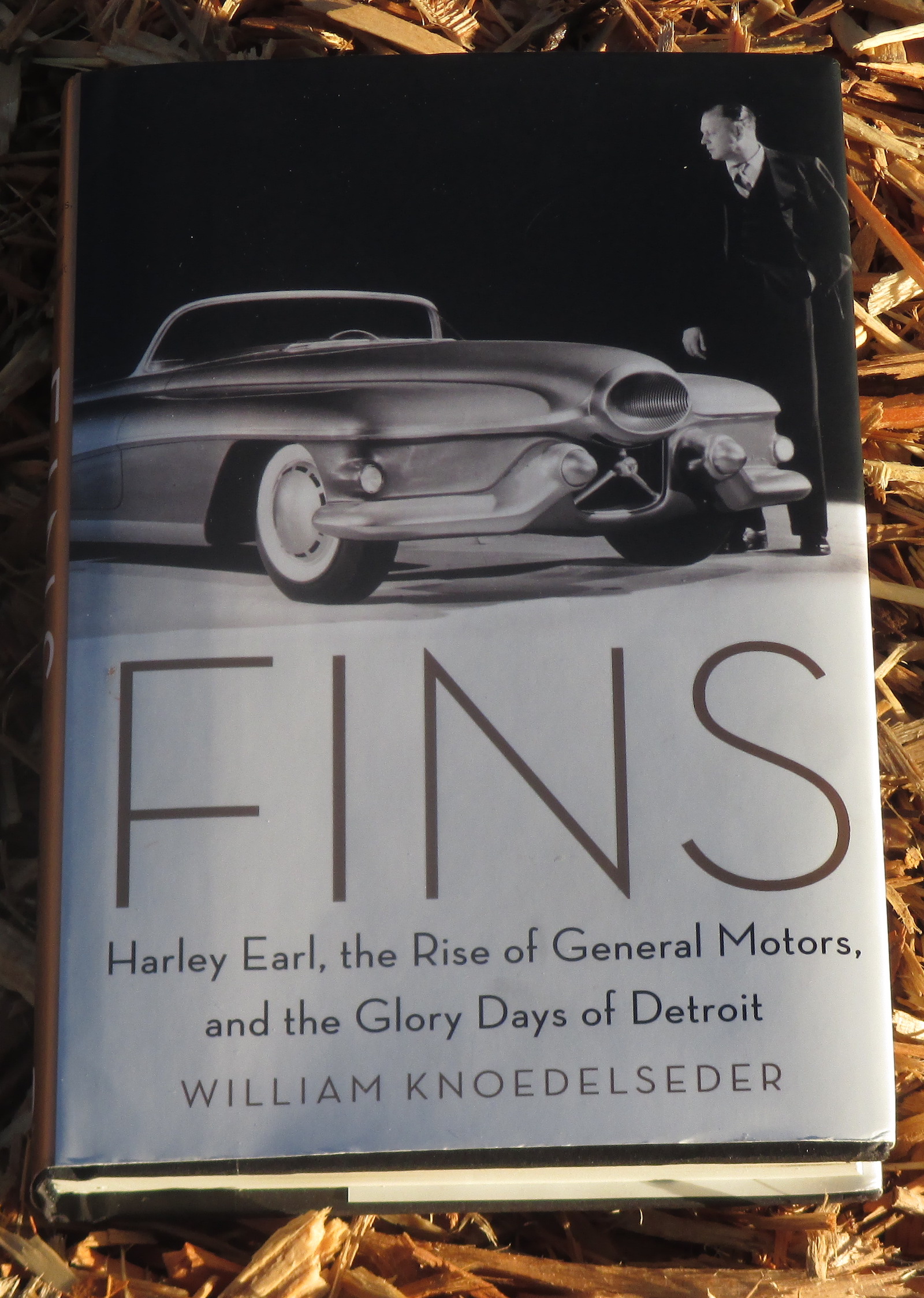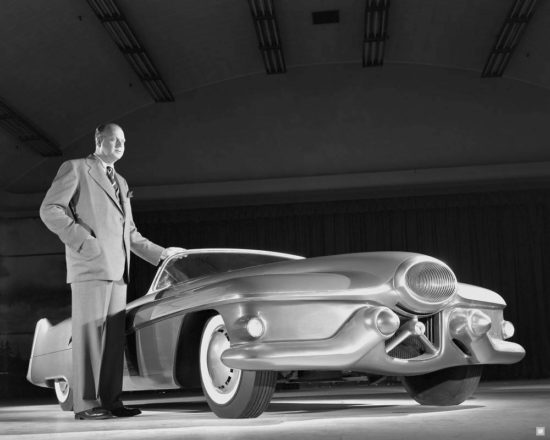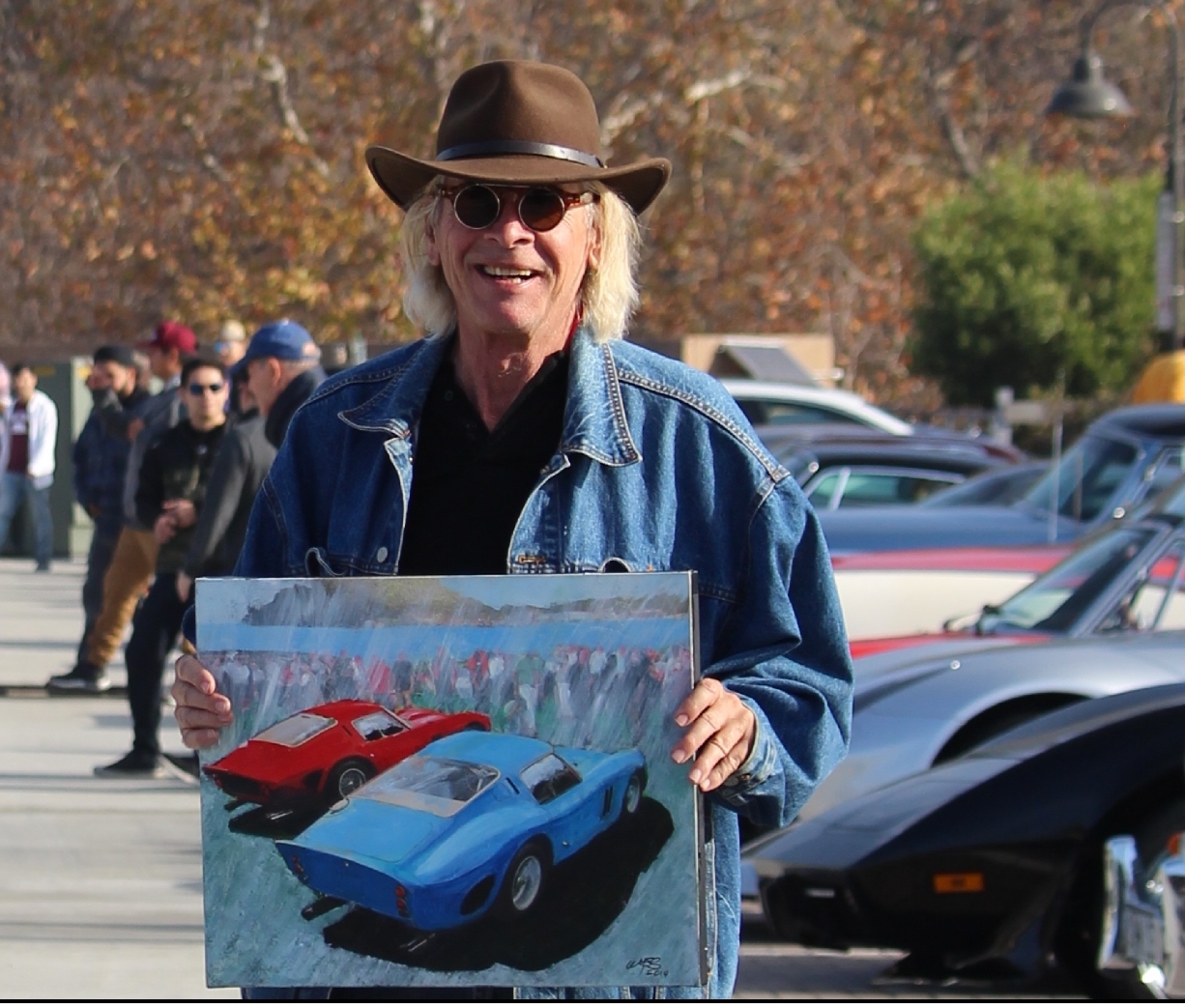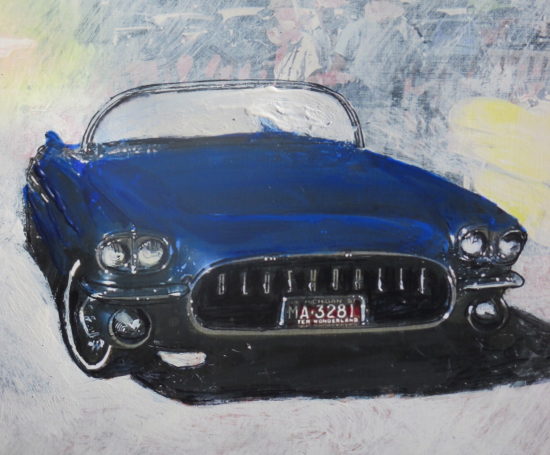Review by Wallace Wyss –
Author: William Knoedelseder
Publisher: Harper Business
Format: Hardcover
Pages: 320
ISBN 13: 9780062289070
Price: $29.99
America’s car industry developed differently from that in Europe, England and Japan. We got hooked early on the three-year model change, what came to be called “Planned Obsolescence” and this book is about the genius that invented that.
The man is Harley Earl, who was the first director of styling for any automaker in America. Before Earl came along, engineers developed a car and little thought was given toward making attractive shapes.
There’s a good bit of Earl family history before you get to the auto business, such as how Earl’s for-bearers came to California in a covered wagon, enduring attacks by wild Indians and the like.
Earl’s first business was joining his father making custom wagons. When cars came along, he and his father would make custom cars for movie stars. Out in Detroit, they heard about him and a founder of GM came out, interviewed him and hired him to be GM’s first director of styling.
Of course, picking colors for cars, materials and body shapes seemed sort of “sissy” to many in the auto industry but when his choices began to result in booming sales, the critics were quiet. GM quickly passed Ford because Henry Ford was still making Model T’s and still offering them in one color; black.
I would have enjoyed seeing Harley Earl. He was said to be a real martinet in clothing choices, having hung out, in the early days, with Hollywood show biz folk like Douglas Fairbanks and Tom Mix, customers for his custom cars.
The author portrays Harley Earl as an autocratic purveyor of taste, and you wonder, must all famous names in design have an ego so big in order to succeed?
One example from the book that stands out is that GM’s first styling chief–going back to 1927–forbid any other designer from GM being mentioned in connection with styling, It was all Mr, Earl.
Still, you have to admit that Earl created car marketing as we know it in America with instituting styling changes every three years. Consumers couldn’t wait to trade in their old car to get the latest styling and I admit I was one of them, gotta have the latest because the tail fin is six inches higher, right?.
Earl also brought the idea of making clay models of cars, an idea he had as a child playing with mud in the riverbed. When he got to Detroit, he had full size clays made and even painted so that the cars were so realistic you thought you could open the doors and sit inside.
Another idea the author credits Earl with is the dream car, building a one off prototype that will predict a styling trend of the future, such as tail fin or a completely disappearing top, and seeing what excites the public, then adjusting production plans to align with what the public went for at the unveiling of the concept car. He would create these dream cars, and unveil them in a traveling road show (with leggy showgirls) called Motoramas, held in cities around the country.
Then he would drive the show cars himself after their show career, such as the million dollar LeSabre. Sometimes he would even (egad!) give a show car away to a pal or one time to a show biz femme named Marie “The body” MacDonald (wonder what his wife thought of that gift…?)
The author tells of Earl’s capriciousness, such as his penchant for firing people on the spot, usually because they questioned his judgement or dared to change a clay model without his approval. Maybe that’s the sign of a good biographer–he or she lays out the facts for the readers to judge.
It is interesting when he shows the waning of power by Earl when a subordinate, Chuck Jordan, found a storage yard of ‘57 Chryslers and realized Chrysler had gone big on fins. The way Knoedelseder describes it, while Earl was away in Europe, Jordan started a whole new trend in design, an alternate reality so to speak so that when Earl came back he was shown the regular designs and then the alternate ones and agreed to go more aggressively toward meeting the challenge from Chrysler. The ’59 Caddy tail fins were the tallest on any American car, sort of the swan song of Earl’s power.
The rest of the book shows him dwindling in power, but ironically he had chosen in Bill Mitchell a man who could imitate his every move, even sartorially. I knew Mitchell and it’s amusing to read about Earl because Mitchell had many of the same mannerisms and penchants, such as driving the dream cars to work and back.
I read to the end still wondering if it is a necessity for big names in any field like Earl to be such a sonovabitch toward his subordinates, suppressing them so he seems ever more the genius. Memories of Steve Jobs come to mind.
But the comparison I make between Jobs and Earl I think is valid because laptop computers would not look like they do if it weren’t for Steve Jobs being so intent on the looks of his devices. I say he advanced the field ten years ahead of where it would have been without him and his relentless badgering of employees.
So it was with Earl. He discovered the basis for consumer demand and milked it to the max. We are still, in America, as a society, tuned to wanting to see next year’s models. Maybe if we were more mature–we would want to see only technical advances but Harley got us hooked…
The book has few pictures, hardly what you would expect for the price, not even a single color picture in a book describing how color was used to sell cars. But on the other hand, it’s an all encompassing story, showing how the car market was created in America by building what people want. After, of course first educating them on what was possible.
Let us know what you think in the Comments and share images in the Comments.
Wallace Wyss
THE AUTHOR: Wallace Wyss is the author of 18 car histories. He is the co-host of Autotalk, broadcast weekly from KUCR FM Riverside, California.







Nicely done.
When Knoedelseder contacted me about Harley Early years ago, I bought and read his book on Anheuser-Busch, very interesting and presumably well-researched. So I must read this one. I knew Harley Earl. He hired me when I was 18, fired me when I was 21 for doing (in 1956) a conceptual 1961 Buick Special that was much smaller than the other series. Heresy! Of course, in 1961they built the car Stan Mott and I had proposed in February 1957, aluminum V-8 engine, 13 inch wheels, reduced dimensions and all. Earl’s capricious tyranny was less severe in Micthell’s case, Irv Rybicki let the bean counters run all over hims and didn’t demean his designers as Earl and Bald Billy had done, and as ChuckJordan, the “Chrome Cobra” did. Their three successors are all decent, civil men, although I must admit that I’ve spent less than an hour with the current V.P. discussing car design, as I’ve done with all the others during the past six-plus decades.
Is this Robert Cumberford? Glad to hear from an insider. I found out that there is a book on Mitchell but it is astoundlingly high priced (though it sounds like it has the pictures that might justify the price) I doubt if I can get one to review, they don’t give away books that cost that much. Here’s the info from Amazon.com
———————————————————————————-
An insider’s look at the Golden Age of Automobile Design at General Motors during the leadership of Bill Mitchell, VP Design (1958-1977). Mitchell elevated design as a marketing tool resulting in General Motors establishing itself as the leading world corporation, and his Iconic cars sold over 136 million (including Corvette, Camaro, Riviera, and Toronado). Mitchell is regarded as the man who singlehandedly saved Corvette. Written by Roy Lonberger, who worked directly for Mitchell as head of his secret Studio-X, this 1st edition book of 440 pages has unique insights into the man, rare designer sketches, clay models, and secret photographs of the unique design process. Five years in preparation and with the help and license from GM Archive, this book is a must read for car enthusiasts, design students, and business managers.
Product details
Hardcover
Publisher: Blurb (November 15, 2016)
ISBN-10: 1366831500
ISBN-13: 978-1366831507
Package Dimensions: 13 x 11 x 3.8 inches
Shipping Information: View shipping rates and policies
Average Customer Review: 4.6 out of 5 stars 17 customer reviews
Amazon Best Sellers Rank: #2,216,341 in Books (See Top 100 in Books)